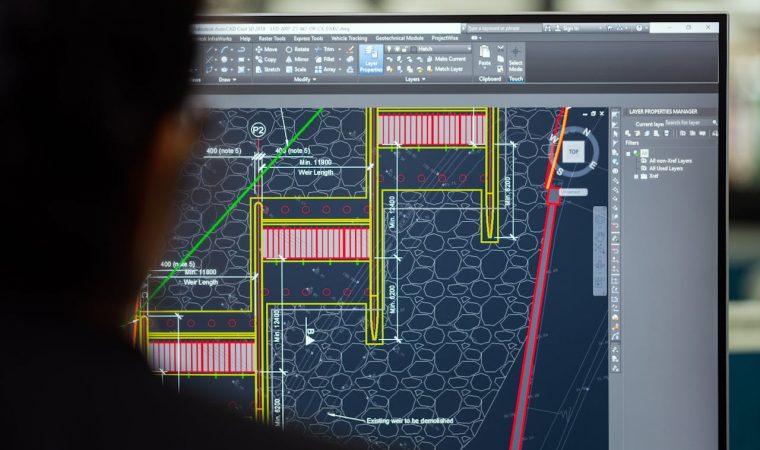The rise of Civil Information Modeling (CIM) is changing traditional civil engineering workflows in a big way. By building on the principles of Building Information Modeling (BIM), CIM offers a more integrated approach to managing projects in the architecture, engineering, and construction (AEC) industry. This means merging data from multiple sources into a single, unified model, leading to a major shift in how civil engineers handle project planning, execution, and overall management. The results mean greater efficiency and precision throughout the entire project lifecycle, and CTC Software Design Solutions can help you harness this potential.
From Building to Construction: Streamlining Project Design
CIM expands the BIM concept to encompass the entire process. CIM includes not only the design data but also integrates construction management elements such as scheduling, cost estimation, and logistics. One of the biggest innovations with CIM is its ability to enhance design and collaboration. Traditionally, civil engineering projects often involved a lot of back-and-forth between isolated teams, which could lead to miscommunication and inefficiencies. CIM, especially when implemented with add-ins from CTC Software, tackles this problem head-on by creating a digital environment where everyone involved—designers, engineers, contractors, and clients—works together seamlessly.
The CIM platform consolidates various types of data, from architectural plans to geospatial information, into one cohesive model. This integration allows for real-time updates, so when one team makes a change, it is instantly reflected across all disciplines. This means everyone is always on the same page, reducing errors and speeding up decision-making. Ultimately, this leads to smoother project delivery.
Optimizing Project Management and Execution
CIM also significantly enhances project management and execution. Traditional workflows often struggle with managing the sheer volume of data and coordinating complex schedules. CIM, especially when supported by CTC Software’s design solutions, addresses these challenges by providing advanced tools for visualization, analysis, and management.
With CIM, civil engineers can create detailed 3D models of their projects, which allow them to simulate construction processes and identify potential issues early. For instance, clash detection tools within CIM can reveal conflicts between utilities and structural elements before construction starts. This proactive approach helps avoid costly rework and delays.
Additionally, CIM improves project scheduling and resource management. By integrating data on materials, labor, and timelines, CIM platforms enable more accurate forecasting and planning, particularly when optimized by CTC Software add-ins. This leads to more efficient resource allocation and better cost control. Real-time progress tracking ensures that any deviations are quickly addressed, helping to keep projects on schedule and within budget.
Enhancing Lifecycle Management and Maintenance
Another area where CIM excels is in the lifecycle management and maintenance of infrastructure assets. Traditional methods often neglect the long-term management of assets, which can lead to inefficiencies and higher operational costs. CIM addresses this by providing a detailed digital record of the project that extends well beyond construction.
Engineers can use CIM to maintain comprehensive records of construction activities, materials, and maintenance needs. This information is invaluable for ongoing asset management, enabling more effective planning and execution of maintenance tasks. For instance, detailed data can help schedule preventive maintenance, monitor wear and tear, and plan for future repairs or upgrades. This proactive approach extends the lifespan of infrastructure assets and reduces overall lifecycle costs.
Meet the Future of Civil Engineering Workflow With CIM
CIM is redefining traditional civil engineering workflows by improving design collaboration, project management, and lifecycle maintenance. As the AEC industry evolves, adopting CIM with the support of CTC Software Design Solutions may be crucial for achieving higher efficiency, accuracy, and sustainability in civil engineering projects. Integrate our add-ins into your workflow to see an increase in ROI. Reach out to learn more.




